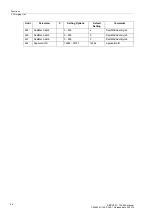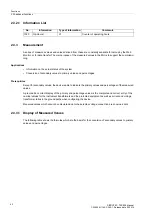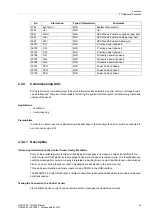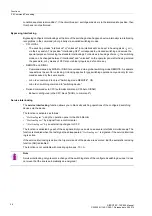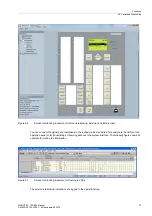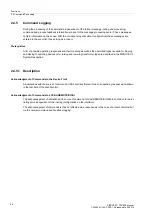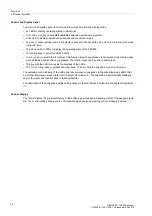
Functions
2.4 Command Processing
SIPROTEC, 7SC805, Manual
C53000-G1140-C380-1, Release date 05.2014
51
The check of interlocking can be programmed separately for all switching devices and tags that were set with
a tagging command. Other internal commands such as manual entry or abort are not checked, i.e. carried out
independent of the interlocking.
Figure 2-3
Example of an operational annunciation for switching circuit breaker (Q0)
Standard Interlocking (default)
The standard interlockings contain the following fixed programmed tests for each switching device, which can
be individually enabled or disabled using parameters:
• Device Status Check (set = actual): The switching command is rejected, and an error indication is displayed
if the circuit breaker is already in the set position. (If this check is enabled, then it works whether interlocking,
e.g. zone controlled, is activated or deactivated.) This condition is checked in both interlocked and non-in-
terlocked status modes.
• System Interlocking: To check the power system interlocking, a local command is transmitted to the central
unit with Switching Authority = LOCAL. A switching device that is subject to system interlocking cannot be
switched by DIGSI.
• Zone Controlled / Bay Interlocking: Logic links in the device which were created via CFC are interrogated
and considered during interlocked switching.
• Double Operation Block: Parallel switching operations are interlocked against one another; while one
command is processed, a second one cannot be carried out.
• Switching Authority LOCAL: A control command from the user interface of the device (command with
command source LOCAL) is only allowed if the Key Switch (for devices without key switch via configuration)
is set to LOCAL.
• Switching authority DIGSI: Switching commands that are issued locally or remotely via DIGSI (command
with source DIGSI) are only allowed if remote control is enabled at the device (by configuration). When a
DIGSI computer logs on to the device, it enters its Virtual Device Number (VD). Only commands with this
VD (when switching authority = REMOTE) are accepted by the device. Remote switching commands are
rejected.
• Switching authority REMOTE: A remote switching command (command with source REMOTE) is only
allowed if remote control is enabled at the device (by configuration).


